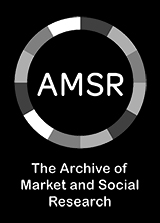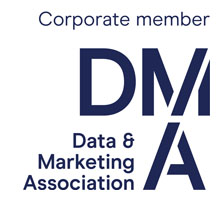The Big Fail
01 November 2017
We’ve all done it… looked at an ad on TV, online, or in print (remember print?) and wondered… “What on earth was that all about?” “Who in their right mind would buy it?”
Research professionals like to think a bit deeper, of course. They know that some arty creative thought up the ad , and in the back of their mind they hope that a researcher was briefed to research its impact. I say “hope” because, sadly, that’s not always the case…
There’s often tension between creatives and researchers. The difference between them isn’t hard to spot; in any meeting the creatives tend to be bearded hipsters who look like new-age lumberjacks or are wearing a lot of black with massively dangly earrings. Researchers of both sexes just tend to look normal… well sort of.
Creatives, of course, would hate to be thought of as normal; all copywriters are frustrated novelists, all art directors want to be Damien Hurst, and all television commercial directors want to be Quentin Tarantino. Researchers, the other hand, just want to be guided by solid facts, sanity and boring old ‘evidence’.
A cocktail of egos
This delicious cocktail of egos, expectations, and skill sets can be fatal; and in the middle of it all sits the poor client – who wants to make money – a noble and very necessary objective, especially as they will need lots of it to pay for the creatives’ fabulously expensive lifestyle.
Often, the market research people are the only adults in the room – and that’s important because in any advertising campaign big money is involved. Nevertheless, the advertising industry’s shining reputation has been frequently tarnished by failed product launches (New Coke, Samsung S7, Google Glass, etc,) plus great brands gone wrong (Blackberry, Atari, Kodak).
New product launches are perhaps the most dangerous tasks for creatives and researchers; here are just two examples of where research – or the lack of it – has played a significant role in failure.
No research at all
You most often see this in start ups where all concerned are blinded by the radiant brilliance of their new product or business idea. This is excruciatingly visible in most editions of Dragons’ Den when some fledgling entrepreneur says something like . . . “Today, Dragons I’m asking for £100,000 in exchange for a 25% stake in my new company manufacturing waterproof toasters, for making toast under water”.
The cameras switch to the Dragons whose collective snugness quotient goes off the scale as they all spot the obvious flaw. One by one they ask the now-sweating entrepreneur: “How do you know that there is a gap in the market for this product?”In response, the embryo tycoon says that their mate, mum, dominatrix, dentist, etc, all think that it’s a brilliant idea. The Dragons then take it in turns to skewer their victim with shafts of distain and ridicule, making it clear that the only gap they can see is the one between his ears. It’s not a pretty sight, but it’s a distressingly common one. Start-ups are particularly prone to it, but even established companies launch products based on zero research, leading them to try to sell products which no one wants, or products (like a waterproof toaster) which solve a problem no one has.
Incomplete research
In America in the late 1990s at the start of the craze for all things low-fat, a manufacture launched a crisp brand called Wow! which had zero calories and practically no fat compared to traditional crisps. Extensive research and taste testing showed that consumers loved the taste, and bags of Wow! sold in their millions – for a few weeks. Sadly, the tasty treats turned out to have an unfortunate side effect – let’s just call it “gastrointestinal distress” (diarrhoea, incontinence, and cramping to be precise). It was a mess in every sense of the word. Inevitably, conspiracy theorists suggested that the crisp manufacturer was in league with the American Association of Toilet Roll manufacturers in an attempt to boost sales, but no one ever got to the bottom of it. The problem, of course, was that the research only looked at one aspect of the product (taste) – whereas with food (a bit like pharmaceuticals) the research envelope needs to be a bit longer in timescale to account for possible harmful side effects.
Does all this matter? Well, yes. It varies from sector to sector (and estimates vary) but some reports say that around 80% of new product launches fail. Not good, not good at all, and the missing research is somewhere in the mix.
What to do? Well, personally I blame the creatives every time.
Download blog here
Get the latest MRS news
Our newsletters cover the latest MRS events, policy updates and research news.











0 comments